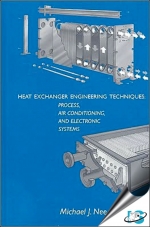Tab Article
This book addresses hundreds of field problems faced by the author over the course of a career. Most exchangers selected are thermally correct, but some constructions are not suitable for an application and can cause field problems.
The author describes constructions that have a negative influence on plant operation, maintenance, metallurgy, requirements, cost, handling, shipping, freezing, recirculation, tolerances, manifolding, distribution, noise, availability, and pressure drop, to name a few.
The effect of adjoining non-exchanger related constructions on performance should not be overlooked. A/C and electronic cooling system problems can often be traced to undersized mating equipment and other constructions as evidenced by examples. The effect of filters, racks, screen rooms, packaging, heat sinks, hot spots, blowers, and ducting on performance is included.
Techniques for identifying, correcting and avoiding problem areas are given. They are arranged to aid the reader in recognizing them. The book was designed for training engineering and non-engineering personnel.


